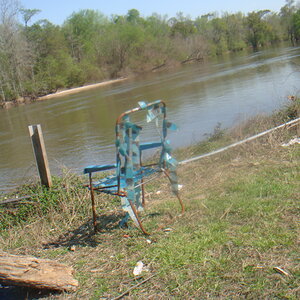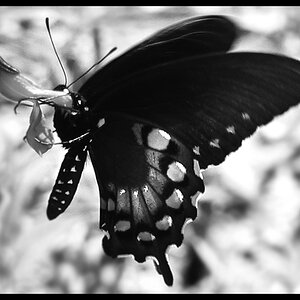Navigation
Install the app
How to install the app on iOS
Follow along with the video below to see how to install our site as a web app on your home screen.

Note: This feature currently requires accessing the site using the built-in Safari browser.
More options
You are using an out of date browser. It may not display this or other websites correctly.
You should upgrade or use an alternative browser.
You should upgrade or use an alternative browser.
Need some help with time lapse photography
- Thread starter dpbofg
- Start date
Garbz
No longer a newbie, moving up!
- Joined
- Oct 26, 2003
- Messages
- 9,713
- Reaction score
- 203
- Location
- Brisbane, Australia
- Website
- www.auer.garbz.com
- Can others edit my Photos
- Photos NOT OK to edit
Optimal manual settings? None. The difference between night and day will be too great for a manual exposure. Use auto exposure that's what it's there for.
That flickr can be dealt with by taking images every 5-10 minutes, and then selecting the best image from a group for the final series. This makes the final assembly very time consuming though.
One thing you need to consider is that 1h intervals means the average day will last 500miliseconds and the average night also 500ms. This video will likely only piss off the epileptics How long is construction going to take? Will it be possible to either skip the night intervals, or slow down the video by taking an exposure every 30 min or so?
How long is construction going to take? Will it be possible to either skip the night intervals, or slow down the video by taking an exposure every 30 min or so?
That flickr can be dealt with by taking images every 5-10 minutes, and then selecting the best image from a group for the final series. This makes the final assembly very time consuming though.
One thing you need to consider is that 1h intervals means the average day will last 500miliseconds and the average night also 500ms. This video will likely only piss off the epileptics
sA x sKy
TPF Noob!
- Joined
- Feb 15, 2009
- Messages
- 80
- Reaction score
- 0
- Location
- Long Island, NY
- Can others edit my Photos
- Photos NOT OK to edit
I would like to create a very long term time lapse video of a construction site. I'm not a professional and this is basically for fun so I'm not looking to buy a ton of fancy equipment or anything. Ideally it will be a set-it-and-forget-it setup.
All I've got so far are my Canon Powershot SD1100 and a tripod. The camera will be positioned behind a window about 1400 feet from the construction site. I found an AC adapter for $30 that will provide continuous backup power to the camera, and am planning on using CHDK to set up the intervalometer, probably at one shot per hour.
Here are my questions:
-What are the optimal manual settings for my camera for this setup?
-How do I minimize the "flicker" that occurs due to the hourly/daily variations in natural lighting when the frames are combined? Are there settings on my camera to help with this, or is it mostly dealt with in post-processing? If so, how is this accomplished in post-processing?
-Are there any other things I might need to consider?
1 shot per hour? I understand you want a long time lapse but 1 shot per hour I think is a bit too much. Depending on how long it takes for the construction project to be completed, I would say at least 1 shot per 5 min or 10 min if need be.
Garbz
No longer a newbie, moving up!
- Joined
- Oct 26, 2003
- Messages
- 9,713
- Reaction score
- 203
- Location
- Brisbane, Australia
- Website
- www.auer.garbz.com
- Can others edit my Photos
- Photos NOT OK to edit
Remember you can always grab every second exposure if need be. But you can't make up for exposures that aren't there.
PatrickHMS
TPF Noob!
- Joined
- Oct 29, 2008
- Messages
- 1,411
- Reaction score
- 0
- Location
- Metro Atlanta
- Website
- www.hmscoatings.com
- Can others edit my Photos
- Photos NOT OK to edit
If you want to keep a camera aimed and still for that long, and I assume that is what you mean - it might take more than just a tripod. Over a period of years someone is BOUND to move it or at least bump it, or bring it in to you asking "What's this doing here?" (lol).
And I am assuming this is a camera you will pretty much forget about using elsewhere for those number of years.
But you might want want to build some kind of supported structure, maybe with a housing to protect at least three sides from meddlesome hands, where you can put "Don't you DARE touch this!" signs. Maybe even secure the camera to the wall with brackets.
Will your memory card be large enough to hold all of this. You might want to be able to swap out the card, would hate to find out years later that files are corrupted in the memory card in the camera.
With a power supply, that will solve the issue of battery failure or leakage, but are you sure you have chosen a camera that will even last that long mechanically?
What about using a good video camera, positioned securely, communicating with a PC where you can store your images?
Sounds awesome, but also seems overwhelming.
Good luck!
And I am assuming this is a camera you will pretty much forget about using elsewhere for those number of years.
But you might want want to build some kind of supported structure, maybe with a housing to protect at least three sides from meddlesome hands, where you can put "Don't you DARE touch this!" signs. Maybe even secure the camera to the wall with brackets.
Will your memory card be large enough to hold all of this. You might want to be able to swap out the card, would hate to find out years later that files are corrupted in the memory card in the camera.
With a power supply, that will solve the issue of battery failure or leakage, but are you sure you have chosen a camera that will even last that long mechanically?
What about using a good video camera, positioned securely, communicating with a PC where you can store your images?
Sounds awesome, but also seems overwhelming.
Good luck!
Last edited:
Garbz
No longer a newbie, moving up!
- Joined
- Oct 26, 2003
- Messages
- 9,713
- Reaction score
- 203
- Location
- Brisbane, Australia
- Website
- www.auer.garbz.com
- Can others edit my Photos
- Photos NOT OK to edit
With a 30min gap between photos, I would say the storage issue isn't such a big deal. It shouldn't take longer than 30min to swap the memory card  But that also falls under the premise that you may want to find something more fixed than a tripod so you don't accidentally move the camera.
But that also falls under the premise that you may want to find something more fixed than a tripod so you don't accidentally move the camera.
Josh66
Been spending a lot of time on here!
- Joined
- Oct 31, 2007
- Messages
- 14,593
- Reaction score
- 1,239
- Location
- Cedar Hill, Texas
- Can others edit my Photos
- Photos NOT OK to edit
If the project did last 1000 days and you took one picture per hour, that would be 1000 seconds (16 minutes, 40 seconds) of video (at 24 frames/second). Not a very long video for almost 3 years of work... An entire day would only last one second.
I want to say that you need to make it longer, like 2 or 3 shots per hour, but I don't know how long I could sit there and watch a time lapse video... 40 minutes seems like a pretty long time to watch a construction site. Maybe just edit out the parts that don't have any visual progress...? I understand if you want to leave "the boring parts" in though.
What if you move before it gets done?
I want to say that you need to make it longer, like 2 or 3 shots per hour, but I don't know how long I could sit there and watch a time lapse video... 40 minutes seems like a pretty long time to watch a construction site. Maybe just edit out the parts that don't have any visual progress...? I understand if you want to leave "the boring parts" in though.
What if you move before it gets done?

Stosh
TPF Noob!
- Joined
- Jul 18, 2009
- Messages
- 203
- Reaction score
- 0
- Location
- Lancaster, PA
- Can others edit my Photos
- Photos OK to edit
I don't really have any good answers for you, just some experience. I made an enclosure out of a PVC electrical type sealed box. I cut a hole for the window and had a piece of glass cut for it. I attached the glass with a silicone sealant (no hardware). I screwed the enclosure to my house. The timer remote was set to take 1 pic a day every day at the same time. The camera was a Canon Rebel XTi, so a 10MP camera. I had a 1G card in it and that lasted the entire time which happened to be about 270 days give or take. It was recording the growth in my cactus bed (yeah I know how geeky is that?).
The most surprising part wasn't the flickering from different light each day - I expected that. It was that my house moves every day! I had to align every image basically by hand (I used a script program to simplify it for me). It was quite a project. Some frames were off by over 100 pixels. No way was that usable in a video! It would make you an epileptic if you weren't already.
So here it is. Originally at 30fps it was over too fast, so I made the movie at 15 fps by duplicating each frame.
The most surprising part wasn't the flickering from different light each day - I expected that. It was that my house moves every day! I had to align every image basically by hand (I used a script program to simplify it for me). It was quite a project. Some frames were off by over 100 pixels. No way was that usable in a video! It would make you an epileptic if you weren't already.
So here it is. Originally at 30fps it was over too fast, so I made the movie at 15 fps by duplicating each frame.
Last edited by a moderator:
Stosh
TPF Noob!
- Joined
- Jul 18, 2009
- Messages
- 203
- Reaction score
- 0
- Location
- Lancaster, PA
- Can others edit my Photos
- Photos OK to edit
Unfortunately, no I don't. The contrast is extremely high when the sky is clear. That's what makes the vertical face of the big rock go almost black. Then when it's overcast everything is pretty much evenly lit.
I don't think the suggestion to take more shots than you need then pick the best ones is going to help the flicker. On a clear day there will be no shots to compare with a cloudy day. One thought I had with mine was to take the picture in the early morning or late evening when there is no direct sun on the subject. It would be a longer exposure, but who cares? The camera is in a fixed position anyway. That almost sounds like a solution until you realize that sunrise or sunset changes by almost 3 hours from Dec to June (at least at my 40.2 degrees latitude). It would be difficult to program your intervalometer to take the pic at the correct time.
I do remember seeing software somewhere that can reduce or nearly eliminate the flicker involved. I'm pretty sure Adobe made it. But it may cost more than your whole setup.
I don't think the suggestion to take more shots than you need then pick the best ones is going to help the flicker. On a clear day there will be no shots to compare with a cloudy day. One thought I had with mine was to take the picture in the early morning or late evening when there is no direct sun on the subject. It would be a longer exposure, but who cares? The camera is in a fixed position anyway. That almost sounds like a solution until you realize that sunrise or sunset changes by almost 3 hours from Dec to June (at least at my 40.2 degrees latitude). It would be difficult to program your intervalometer to take the pic at the correct time.
I do remember seeing software somewhere that can reduce or nearly eliminate the flicker involved. I'm pretty sure Adobe made it. But it may cost more than your whole setup.
Enough Already
TPF Noob!
- Joined
- Dec 10, 2008
- Messages
- 77
- Reaction score
- 0
- Can others edit my Photos
- Photos NOT OK to edit
I would shoot it at a lower resolution. HD equivalent at the most. I like the idea of mounting it on a bracket. Pick a focal point in the distance, line it up with the middle of the frame, so if you even have to move it or change the camera,, you can just set the next one up pointing at the same spot, then adjust the zoom so the frame size matches. Even if its a little off, the change will be from one frame to the next, you would not even notice. Sounds like fun but a torturous wait for the final video. Good luck.
Most reactions
-
 428
428 -
 292
292 -
 285
285 -
 270
270 -
 221
221 -
 204
204 -
 185
185 -
 179
179 -
 168
168 -
 166
166 -
 148
148 -
 133
133 -
 120
120 -
 95
95 -
I
94
Similar threads
- Replies
- 12
- Views
- 876
- Replies
- 6
- Views
- 626

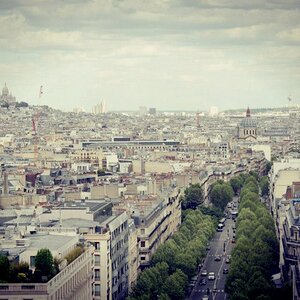
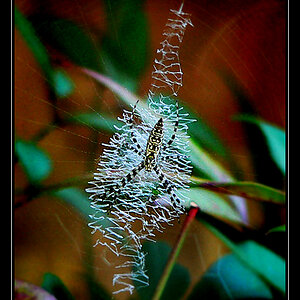
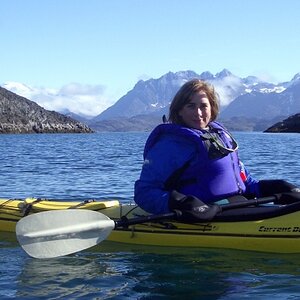
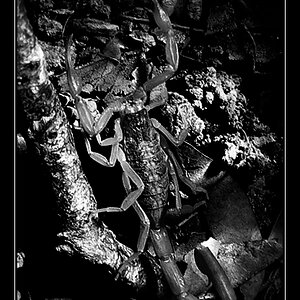
![[No title]](/data/xfmg/thumbnail/38/38264-552eb428d8a704186dcc43400f417d0f.jpg?1619738548)
